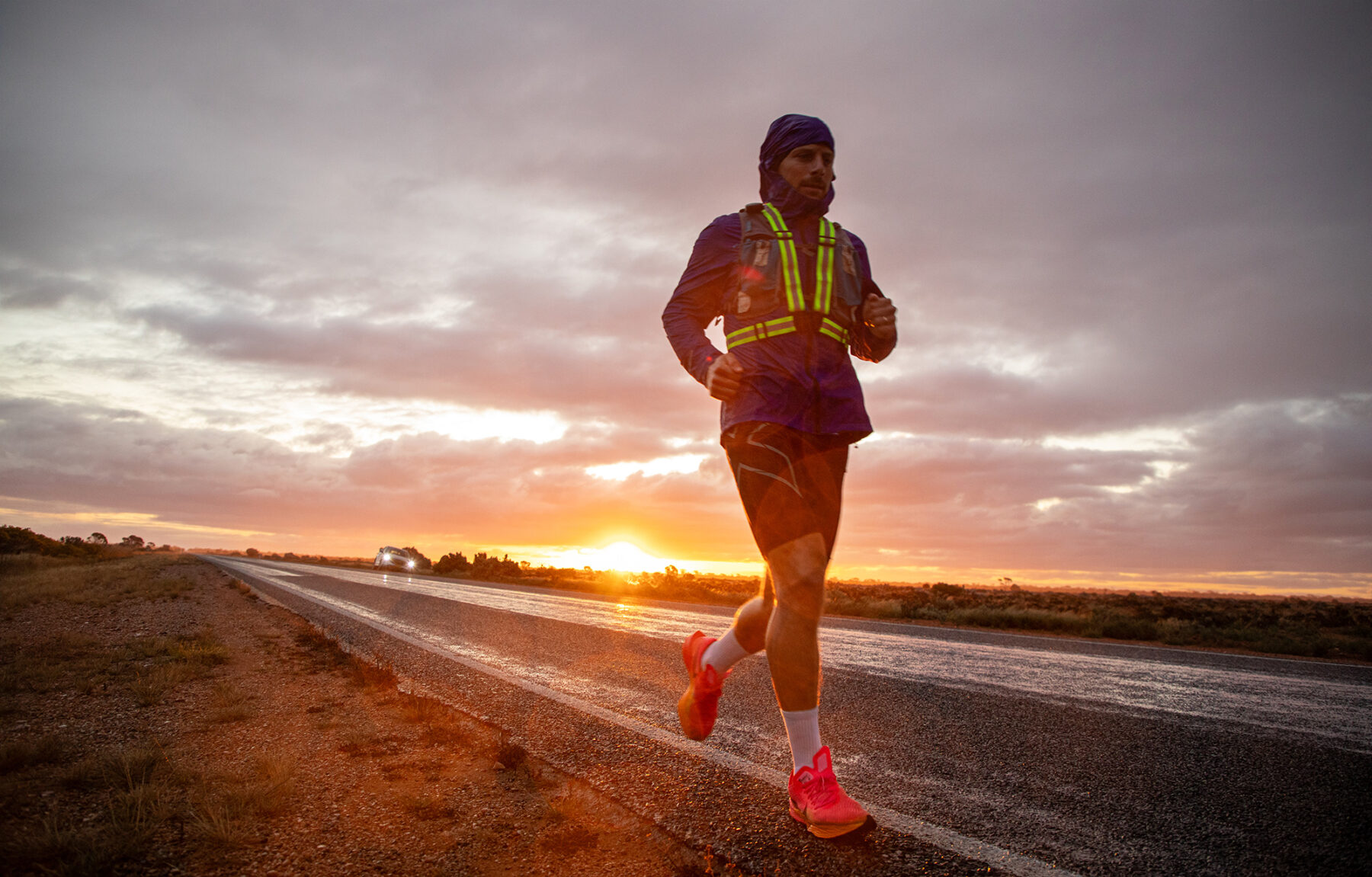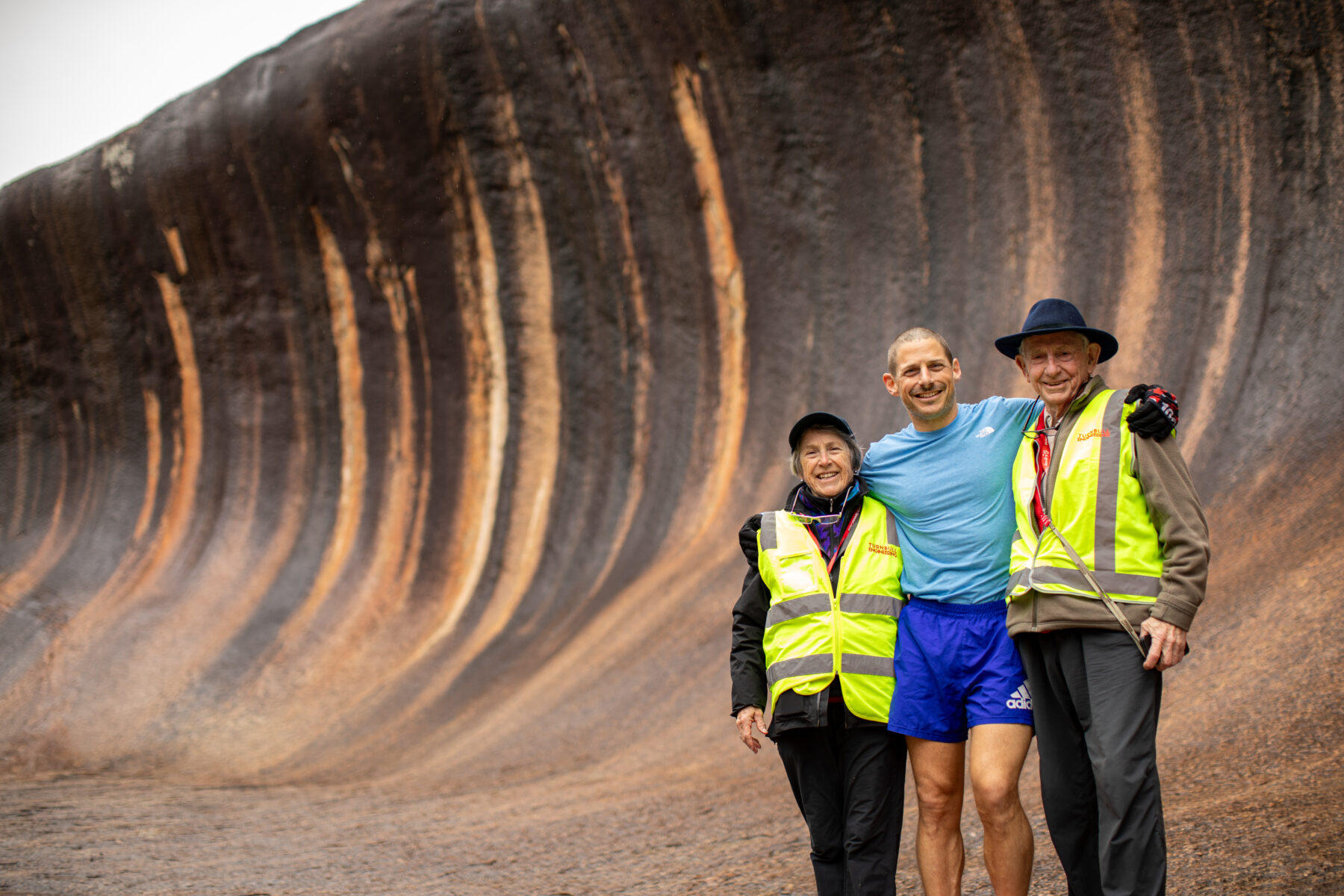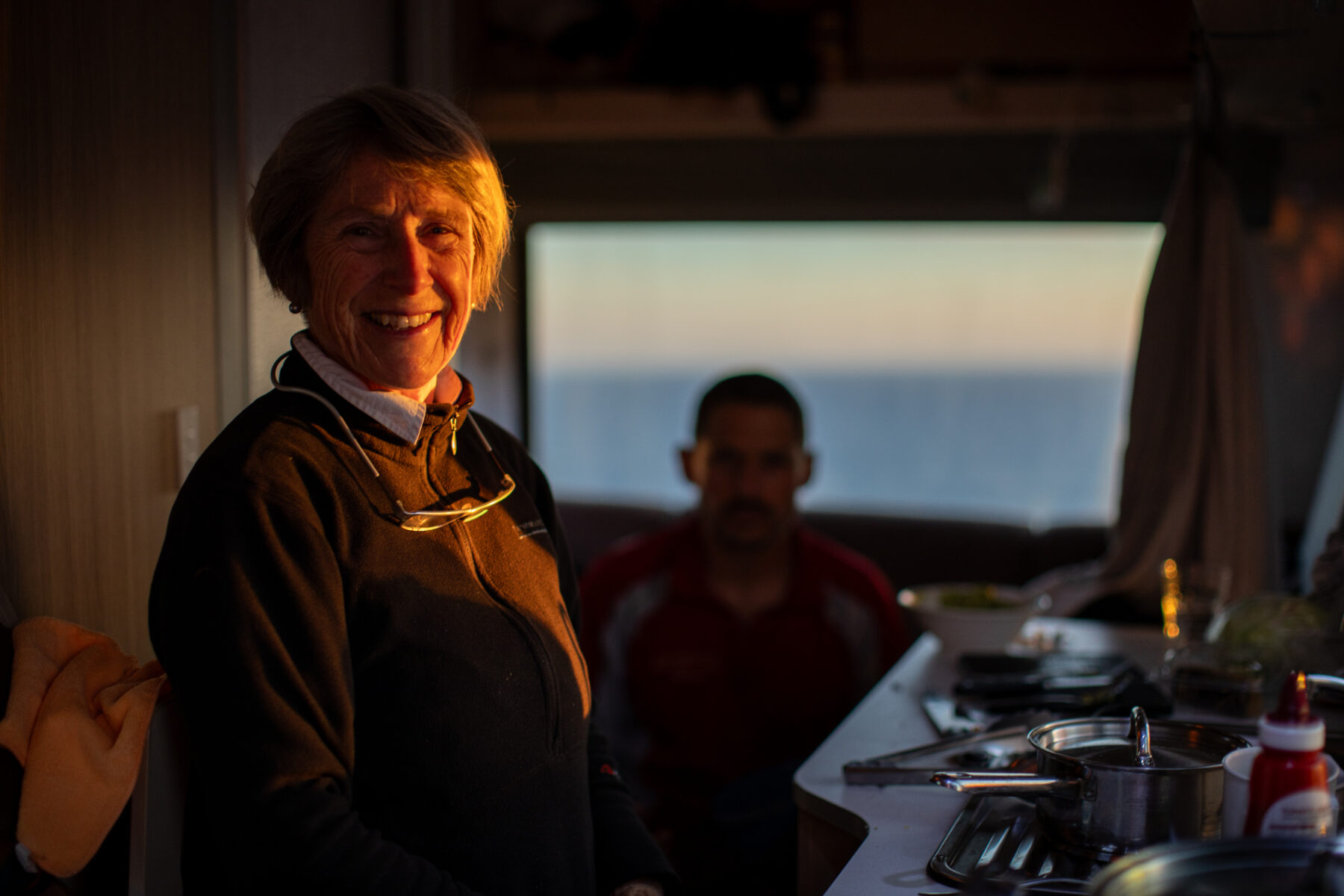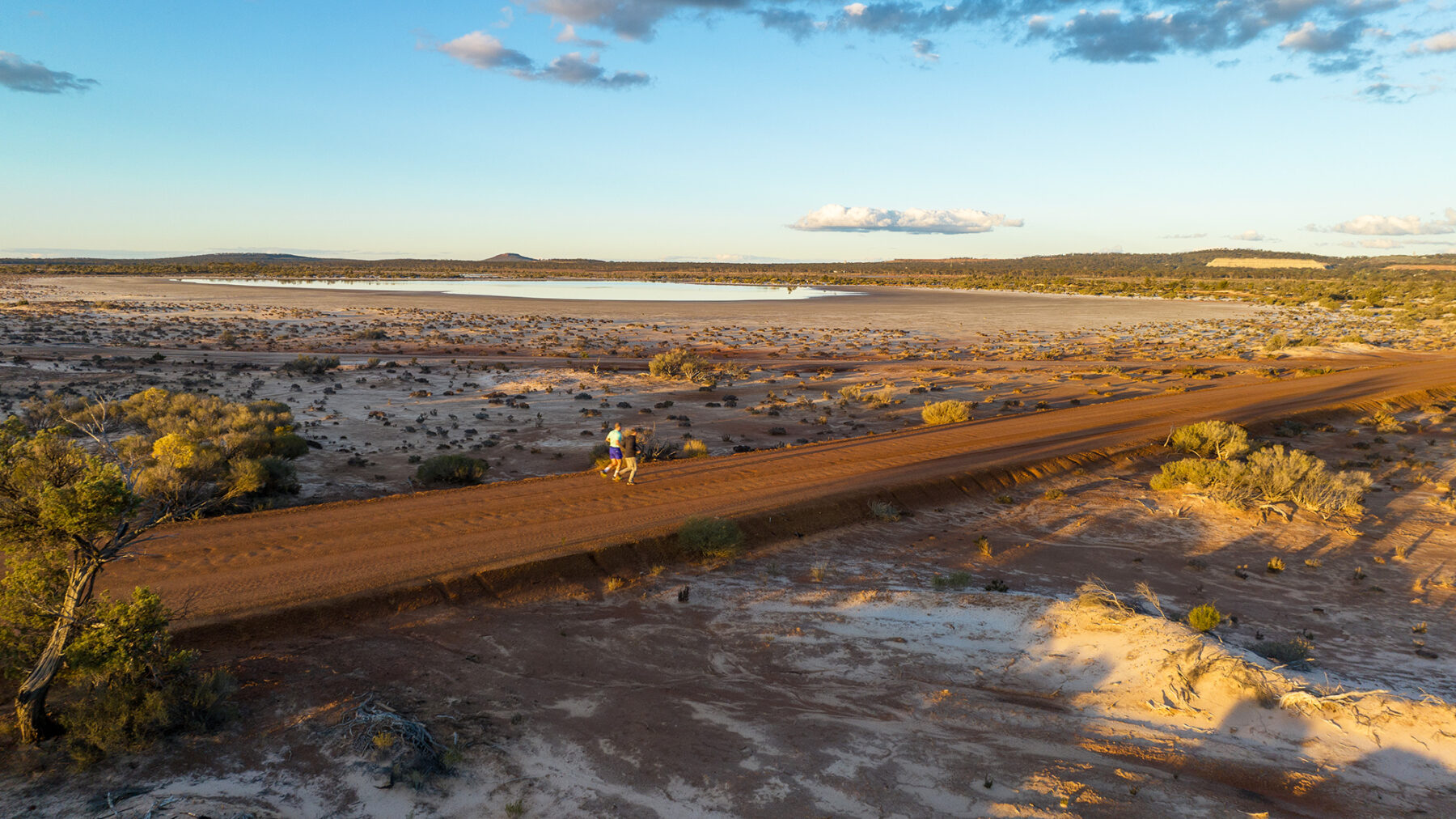Chris Turnbull recently completed a run from Perth to Sydney – a distance of 3856km – in record time. Why would anyone take on such a mammoth run? The answer is as surprising as it is straightforward.
“Adventure.” Chris says. “I wanted to see Australia and meet people, see the sights and explore, then at the same time I was interested in seeing how fast I can do it. It was all about the experience, really.”
And fast he was! The previous record for a Perth to Sydney run was 43 days, set by German runner Achim Heukemes in 2005. Chris completed his epic run in just 39 days.
But beating Heukemes’ record was never Chris’s primary objective.
“My goal was to finish, number one, and the second priority was to have the best time I could while doing it, and then the third was the icing on the cake if I managed to break that record,” he says.
Chris’s run was by no means a solo effort – he had a team of 16 people working behind the scenes to help him achieve his goal, from logistics and planning to medical support. This included a rotation of four people on the road with him for the duration of the run.
“We had an RV and a hatchback – a redundancy to make sure I could keep running if one of them broke down, or one could go off and get supplies from nearby towns.”
A day on the road…
Of course, staying on target was imperative if Chris was to complete the run in the time he had allocated himself.
“I wanted to target 100km a day, and for about 10 days or so I hit about 105km in a day, so I was really trying to get most out of every 24-hour cycle as possible,” he says.
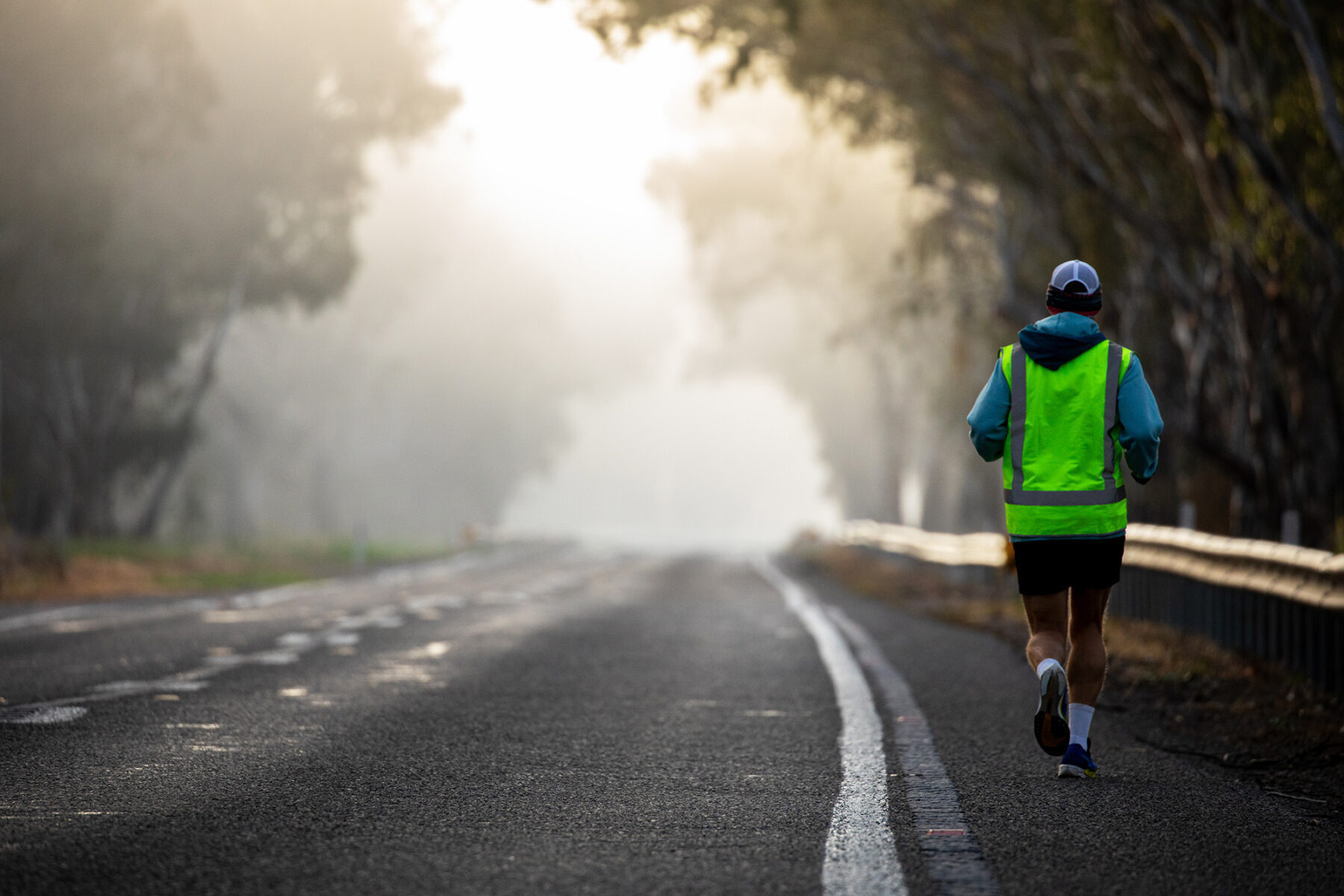
“On average I woke up at 4:30 in the morning and I rushed to get on the road and running in an hour, and then I’d run on average for 13 hours, an average of 100km, and then that left me three hours, really two hours in the evening on average, to get to the camping spot or roadhouse, wash up, clean myself up, eat a couple of dinners, do a little bit of planning for the next day, write a couple of messages or a quick call with my family, and hit the sack.”
That cycle would begin again the following day, and Chris would push on with barely a break for the next 13 hours. “The only things I would stop for were to put sunscreen on my legs, answer the call of nature or if there were any emergencies, otherwise it was non-stop.”
Chris is a seasoned ultra-marathon runner, but he says nothing was as challenging as this transcontinental effort.
“Nothing was even in the realm of what this was,” he says. “The toughest thing I found in the end was 39 days of just that time pressure, from waking up in the morning at 4:30, rushing to get on the road, running as hard as I could all day… it felt like I had my foot on the accelerator pushing myself as hard as I could all day, and then cleaning up and getting to bed as fast as I could, and then not sleeping very well, just rolling around in in real pain for a lot of the night, and then getting up the next morning and do it all again.”
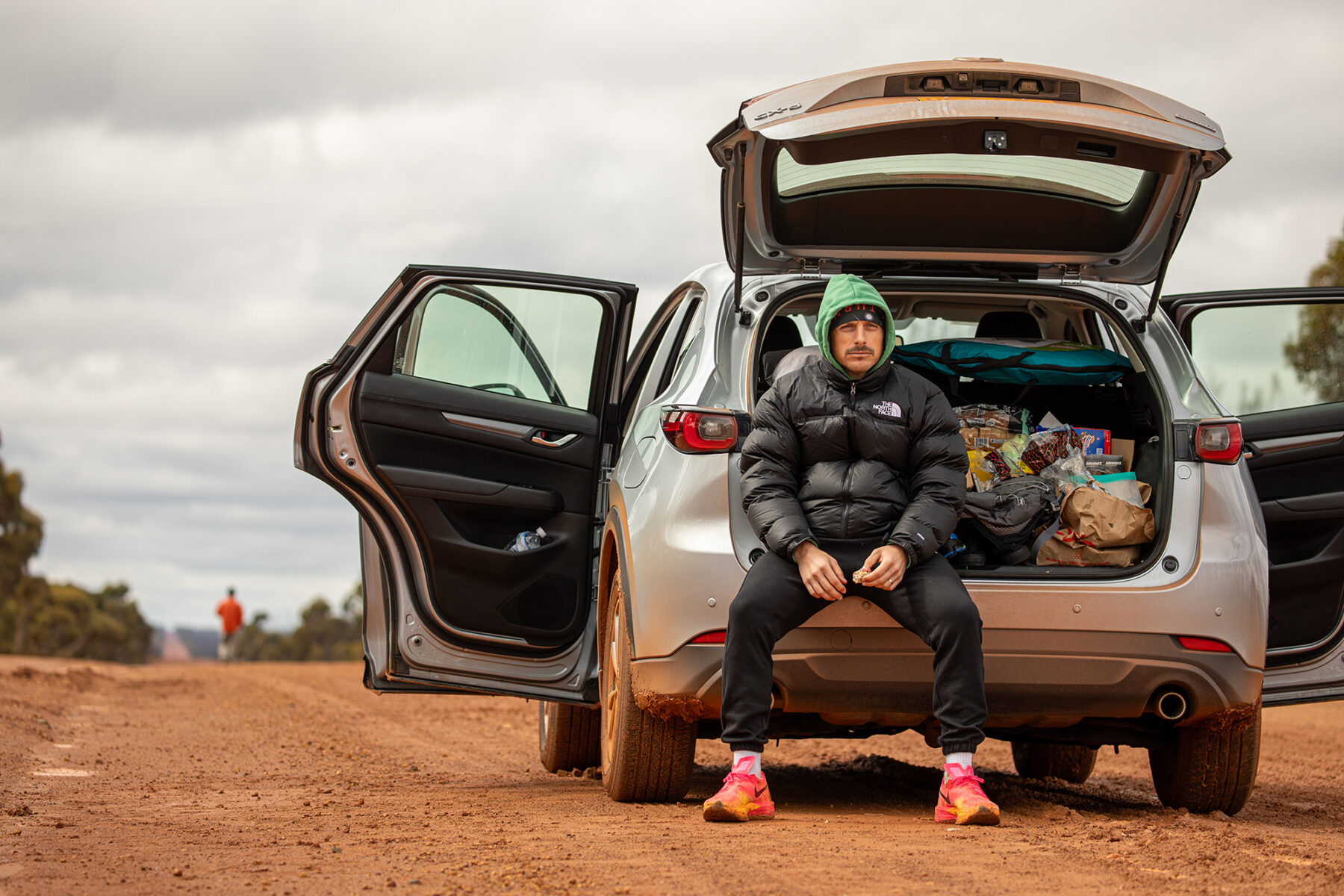
Fuelling the fire
Although Chris and his team had mapped out accommodation options along the route, some nights he would finish running at a point that was too far from the nearest roadhouse, in which case he and his team would camp where they stopped, so he would sometimes have forgo the luxury of having a shower.
This was the case early on in the trip thanks to road conditions and weather, which at one point slowed Chris’s progress considerably.
“One of the wildest parts of the trip was Hyden-Norseman Road, which is about 300km long and largely gravel, I think it’s about 250km of gravel, which means mud in the wet,” Chris laments. “It was initially closed when we got to it, which delayed us, then we got special permission from council to proceed on it, but it was very slippery.
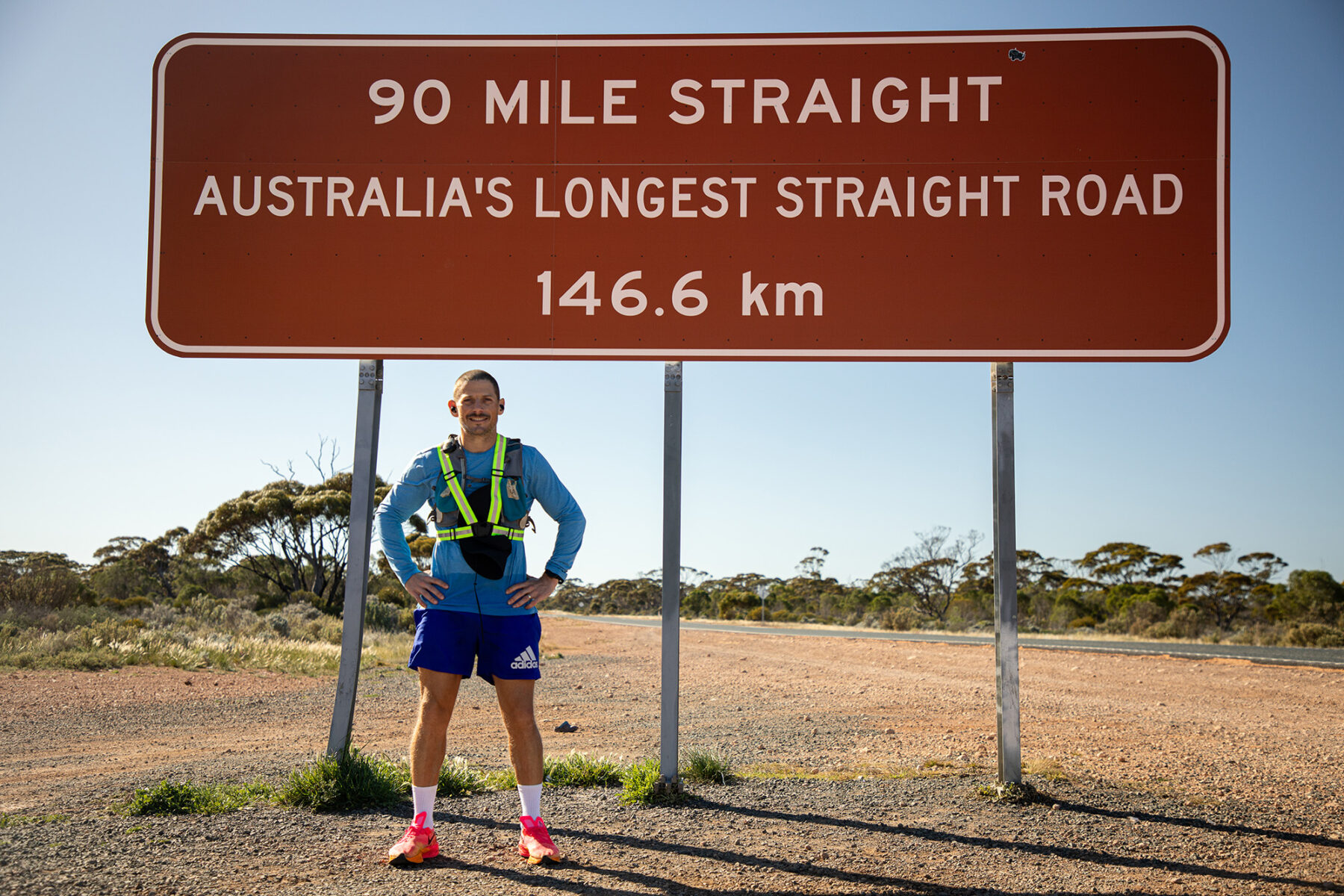
“We had to pull up stumps at one point because it was so muddy, and lost half a day… we couldn’t get the RV through, because it was so muddy, which meant it had to drive the long way around via Esperance, going an extra 600km, so it was just the hatchback – with Jack the filmmaker and another ultra-endurance athlete, a mate called Mounty (Richard Mountstephens) – it was the two of them in the hatchback and myself running. But the RV was the only way we could cook meals, and while we transferred a few things over to the hatchback, we forgot cutlery… so I ran for three days there, and the crew was in a similar boat, without having a shower and without having any cooked meals, so was basically sandwiches with dozens of pre-boiled eggs, mayo and peanut butter, for three full days of running.
“Running for a full day with multiple layers of sun cream on you, and sweat, and then be completely exhausted in the dark setting up a tent and climbing into – or sticking into – a sleeping bag, while eating sandwiches… another five sandwiches for dinner after eating them all day, like 20 during the day, and then waking up in the morning and just looking at the bowl next to me in the tent and just getting my hand in there and eating what I didn’t eat for dinner, more sandwiches… The biggest challenge was the mental side of it, but this was probably one of the real extraordinary experiences.”
The energy expended running an average of 100km a day meant Chris’s body needed a lot of fuel, and his diet was carefully aimed at ensuring he could maintain his pace and endurance. So what did he consume?
“Water and Hydralite, and lots of carbs during the day, and then more protein and fat in the evening.
“During the day lots of sandwiches, lots of porridge – I’d make that a bit watery and drink it down fairly quickly so I could get running faster, sooner again.”
But it wasn’t all healthy eating: “Baked goods – I’d have all the treats from the local country town bakeries; it was fantastic, lamingtons and apple pies were my favourites but also muffins and donuts and finger buns… and whatever they had that was carby.”
Some of the physical challenges faced by Chris were from what he describes as ‘seasonal injuries’.
“Lots of over-use injuries like muscle strains and swelling,” he says. “My left knee doubled in size in the first two weeks… I call them seasonal injuries or pains because across all the different muscles and tendons and ligaments, they just seemed to keep coming and going at different times, and so at any time I might have four different ones, some of them coming, some of those going.”
One small bump in the road
There was only one serious injury that hampered Chis progress and that was when his Achilles tendon “blew up” while on the Nullarbor Plain.
“I tried taping it, that didn’t work to provide enough support, so I started walking and then it just got worse, more and more painful walking, until I really couldn’t walk, I was just in agony. Disappointingly I pulled up stumps for the day, early in the afternoon after lots of very slow walking. I went to the roadhouse, just rested it up, it was my first early knock-off day.”
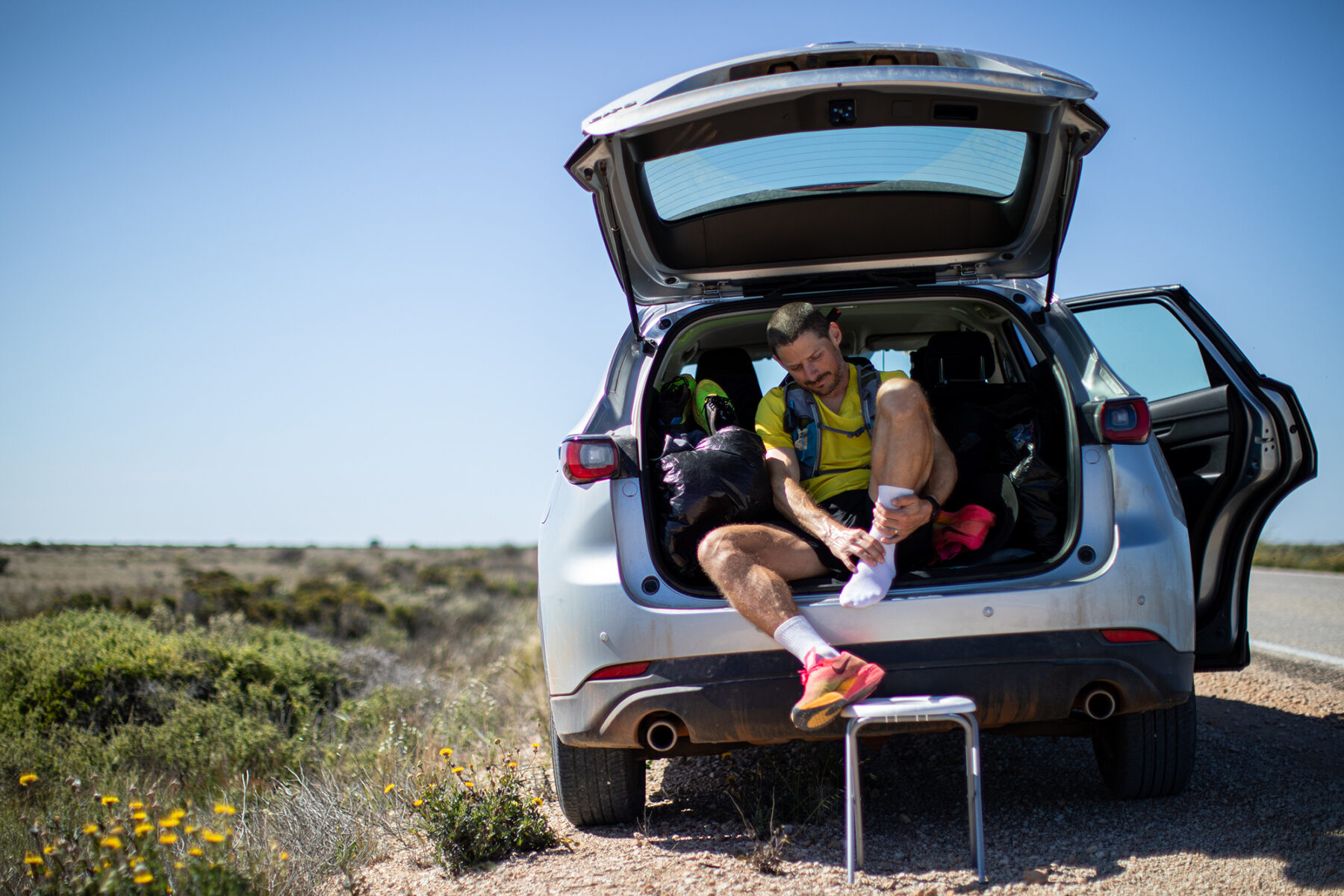
Chris says he took Nurofen, got the best rest he could and got up again at 4:30am the next morning and headed back to the start line. “I just took it really slowly, eased into it, and it worked again the next day, which just seemed incredible that it healed so much overnight,” he says. “I could still tell it was injured but it wasn’t stopping me from running, and so I managed to get 100km done that day, and I never ran less than 100km again until I finished.”
The mental pressure was a constant for Chris throughout his transcontinental run, and he says to didn’t let up until the finish line at Manly was in sight.
“There was just huge pressure like I never felt in my life before,” he says. “Five minutes before I crossed the line, halfway down the final hill where I could roll to the finish line, that was the first time I actually felt confident, that I knew I was going to finish, because before that I always thought there was a small chance of one of these injuries might blow up…”
“I actually sat down for a moment and all the emotion came out of me over about 60 seconds, it was the first time in my life I teared up since being a kid and it came right out of me, my nose was running full stream and I was making involuntary sounds, everything, on these apartment steps on Sydney Road, and after about 60 seconds it just passed over me, and I just felt completely relaxed.”
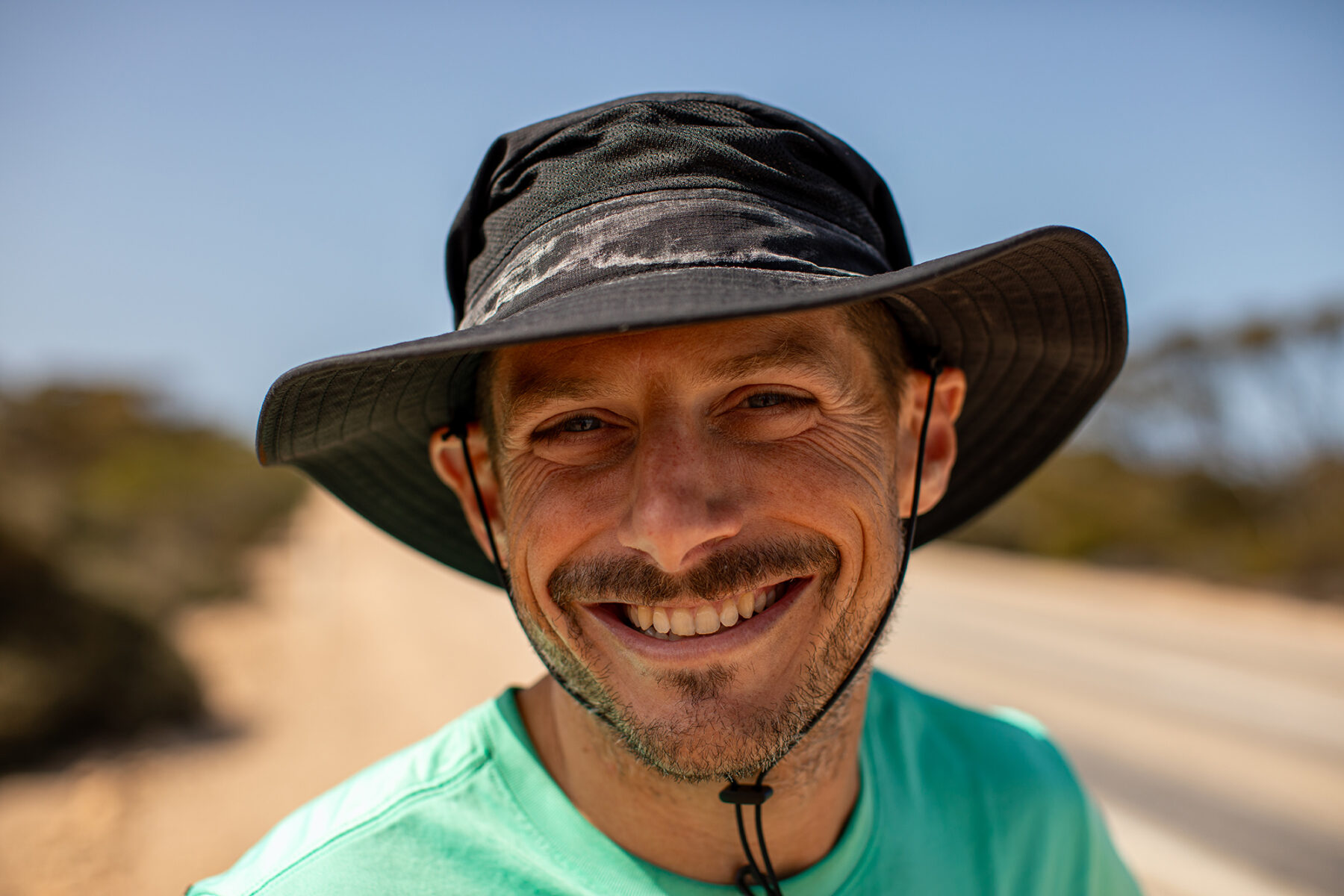
While the mental anguish was over quickly, Chris says the physical recovery would take a lot longer. He also says he wants to spend more time on pursuits that involve his family and his work life, although adventures will always be calling.
“I’ve got a 40th birthday coming up next year so I want to do something less solo and drag a couple of buddies into some of the wild mountains in southwest Tassie so that would be a fun one to do, something with some good mates.”
Chris’s mate Jack Bullen is making a film about this incredible transcontinental run, but in the meantime, you can read more about this amazing achievement, and Chris’s other pursuits, on his website, turnbulladventures.com. And don’t be surprised if this incredible Aussie’s adventures inspires you to set your own outdoor challenge!
